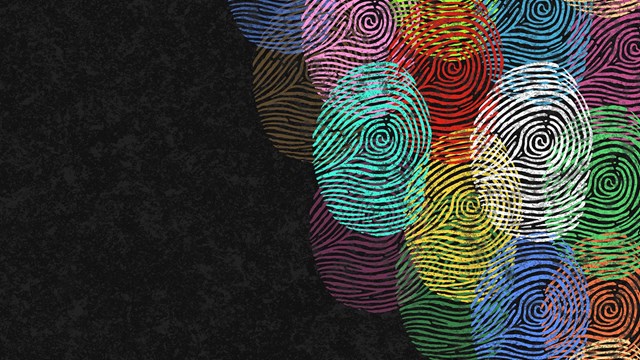A few years ago, I was on the phone with a homeowner. He was irate with how his community’s money was being spent. He was unhappy with the budget increase. It was a call I took regularly from any one of my homeowners (and more often than not, a hundred of my homeowners). Whenever the association budget is sent out with an increase, I often get numerous calls, letters, and in-person complaints that owners are paying all this money and getting nothing back. So, several years ago, I began breaking down the assessment in newsletters, via letter/email, and the budget letter itself. I explained where their money was going specifically and to what projects. The calls started to slow down. Owners started to understand where their money was going.
What has become apparent over the years is that a lot of the people who buy into associations have never lived in one. These new association members might be first time home buyers or had always lived in a single-family. They didn’t know what a reserve was and didn’t understand that their assessment wasn’t going entirely to pay management (even though that is where they send it).
There are so many homeowners who are distrustful of homeowner/condominium associations. They see the news stories, and most of them feature a lone homeowner standing up against the mustache-twirling evils of their association. On social media especially, the comments trend towards how the nosy board is out to get them, or they are upset that they cannot do what they want, and the association/board/manager is oppressing them. It’s rare that most homeowners are singing the praise of the manager/board/association. How can we combat this attitude?
You hear all the time that communication is key - but overcommunication can be better.
Newsletters
While you can tell homeowners about rules reminders or upcoming community events, you can also use the newsletter to educate your homeowners. Explain what reserve funding is and tell them about future reserve projects. Give them specifics. If they know the association is sitting on $1 million, they might not understand an increase in their monthly assessment. Advise them that the roofs are scheduled for replacement in the year 2021 and the cost will be $900,000 (spending the majority of those reserve funds). Show them where that money is going now, and in the future, and then remind them of the projects that have been completed.
One of the biggest gripes we hear is, “I pay all this money and it goes nowhere. I pay all this money and I get nothing.” Remind owners of the major projects that might not be as obvious to them. They might not notice the major tuckpointing project, the streetlight replacement or the major sewer repairs, but these projects not only protect their home, but owners themselves - and property values overall. Tell them how much of the total budget these major projects cost, and make it relatable. If the owner’s assessment is $200 a month, tell them how much of that amount went to those major projects, or how much of reserves went to replacing a major component. I recommend doing this as a Board Completed Projects List. Not only does that provide the information to homeowners, but it reminds them that their volunteer board helped to get these projects done.
Letters/Emails
Another way to update owners is with regular correspondence with updates on projects, meeting notices, calls for volunteers, etc. For example, when you send the budget- explain where their money is going. Don’t just send them a budget and hope they can read and understand it. Explain that 20% goes to reserves/savings. Explain that 15% goes to landscaping. 15% is insurance on the building. If they see that $40 is going to savings and $30 to insurance, it is more tangible. If you are frequently reminding them of projects in the community and how these projects will add value to their lives/homes, this will be in their mind when they read about the budget increase or see construction on the property.
Meetings
The goal is to have a quick and efficient meeting, but unfortunately, we choose speed over explaining projects fully. Often, a project is listed, the board votes with limited discussion and owners do not understand what the board has approved or why. It only takes a few minutes to recap something that might have a deeper history than the board simply calling it for a vote. Board meetings have seen a significant downturn in attendance in the last few years. If owners come to meetings and feel like the board isn’t discussing anything and isn’t sharing the process, they often become even more distrustful of the board and either stop attending meetings, tell their neighbors about how secretive the board is (which only serves to create distrust of the association and board), or they attend the meetings and become confrontational. Taking an extra minute or two to explain the history of a project, the bids obtained, the planned work to be done may add a few minutes to a meeting but will let owners actually know what is going on.
Updated Website
Providing association documents on a website gives owners the ability to review community documents. By providing minutes, the reserve study, audits, and governing documents, owners will see the transparency in the management of the community. They may not all look, but you have provided it to the ones who will. These owners are likely going to be assets to the community. Not only by being knowledgeable about what is going on but volunteering to serve on the board or committees.
By keeping in mind that your homeowners are often living in their first association, and over-explaining some of the basic information, you can decrease owner dissatisfaction and educate your owners on how the Association functions. Some topics I recommend are: Explaining What A Reserve Is, Board Member/Volunteer Roles, Snow Removal Processes, Insurance basics, Board Accomplishments, The Reserve Study, Rules Processes, Entering a Work Order/Contacting Management, and other aspects that non-association owners are likely unfamiliar with.
Support Volunteers
Finally, always use your communication to support community volunteers. Your board of directors, committee members, and other volunteers are unpaid. Volunteers are hard to find. By giving homeowner volunteers recognition and praise in newsletters, letters, and emails you will make them want to continue to be involved stewards of their community.
Meaghan Bollenberg is a Community Manager with FirstService Residential. She is an HOA resident and has served on her association’s board of directors.










Leave a Comment